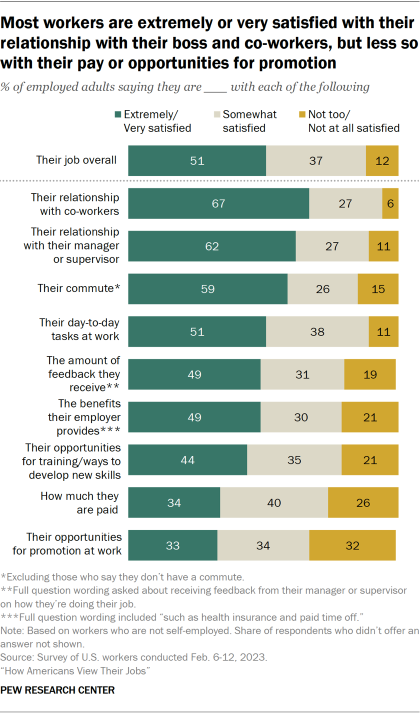Following the trend of quiet quitting, resenteeism in the workplace have become more common as employee engagement decreases with increasing dissatisfaction and frustration in the workplace.
“Resenteeism” is the new workplace buzz word and the rise in resenteeism is increasingly impacting the workplace culture, a looming pandemic that is emerging in the workplace.
What is Resenteeism in The Workplace?
Resenteeism is a new term coin to describe a workplace phenomenon where resentful employees who staying in a job and showing up to work harbor negative feelings and dissatisfaction toward your job.
- Resenteeism is distinct from absenteeism, where you’re physically absent from work.
- Resenteeism is distinct from presenteeism, where you show up but are not fully functioning due to illness or other distractions.
- Unlike their quietly quitting counterparts, employees experiencing resenteeism are vocal about their workplace frustrations, contributing to a negative environment.
While employee engagement is the goal, resenteeism can be seen as its antithesis, signaling a decline in workplace morale and productivity.
Resenteeism is The New Pandemic in The Workplace

You’ve likely heard of presenteeism and quiet quitting, but resenteeism has emerged as a new concern for HR leaders. The unprecedented rise in resenteeism captures the sentiment of employees who remain in positions that leave them fundamentally dissatisfied.
- 77% of US employees say they simply feel like a ‘cog in the corporate machine.
- 31% say they have no idea how their performance contributes to business success.
Many employees blame it as the aftermath of the pandemic, and increase in expectation with the introduction of AI technology at work.
- 86% said they felt it was harder to be successful at work than it was pre-pandemic.
- 65% of Americans feel like bosses expect more of them now than they did three years ago.
With the Great Resignation having spotlighted the willingness of workers to leave unsatisfying jobs.
Resenteeism signals a shift in how fundamentally unhappy employees face work rather than quitting their jobs.
As fears of a recession loom, citing economic uncertainty and job security fears making the option to quit less viable.
- 84% of employees say they are worried about the impact of the current economy.
- 50% are worried about their job security.
Employees experiencing resenteesim often feel trapped in an unsatisfying position, this inadvertently contributing to a toxic environment.
Today, both employees and employers are challenged to navigate these complex dynamics within the workplace.
How to Identify Cause of Workplace Resentment in Employees
Identifying the workplace resentment is crucial if you want to maintain a positive work environment.
Dissatisfied employees will choose to perform the bare minimum due to a lack of career growth opportunities. This feeling can lead to frustration and a significant drop in morale.
Start by looking for signs of resentment, such as a decrease in team spirit or individuals expressing negative attitudes.
- Decrease in Motivation: Employees may convey their lack of motivation verbally or through their overall job performance.
- Decrease in Enthusiasm: Pay attention to those who seem to have lost their enthusiasm for the job; this can be a clear indicator of resentment.
Strategies for Employers and Managers to Address Resenteeism

To effectively tackle resenteeism, it’s crucial for you as an employer to implement targeted strategies that can transform the workplace atmosphere and enhance employee satisfaction.
- 88% of HR leaders agreed that their organizations could be doing more to improve their employee experience,
- 88% of managers and HR leaders also say they need to rethink their people strategy to succeed in today’s economy.
- 50% of HR leaders accepted that they are not keeping up with high employee expectations.
Fostering a Positive Work Environment
Cultivating a positive work environment is a powerful way to help reduce resenteeism.
Ensure your company culture promotes inclusivity and respect.
Regular team-building activities and an open-door policy can strengthen company culture and boost resilience.
Ensuring Clear Communication and Support
Open communication is essential in recognizing and addressing resenteeism.
Create a feedback-friendly space where employees can express their grievances.
- Actively resentful workers are likely to open up if they feel their concerns will be heard and addressed.
- Anonymous surveys can also uncover hidden dissatisfaction and help you understand the underlying causes of resenteeism.
As an employer, strive for transparency and encourage managers to check in regularly with their teams.
Providing supportive feedback can create a more trusting and communicative work environment.
Develop Employee Recognition and Reward Program
Recognition is a key driver to combat resenteeism.
Develop clear criteria for your reward program and make certain that achievements are celebrated company-wide.
This recognition fosters a sense of value and belonging among employees.
Invest in Employee Development and Training
Investment in professional development and training shows commitment to your employees’ career progression.
Offering opportunities for skill enhancement and professional growth can demonstrate that addressing resenteeism is a priority.
Provide Work-Life-Balance to Support Mental and Physical Health
A balance between personal and professional life is instrumental in preventing resenteeism.
Encourage your employees to utilize flexible working options and ensure that workloads are reasonable to support their mental and physical health.
Implementing these strategies will not only address resenteeism but is essential for fostering a healthy and productive workplace.
Why Do You Need to Addressing the Cause of Resenteeism in The Workplace?

Consistent resentment can nurture a toxic work environment and create a toxic work culture can lead to the downfall of the team or even the company.
- High turnover rate
- Decrease in work productivity
- Decrease in quality of work
Employees who only do what’s necessary and just going through the motions, may eventually choose to quit.
By being proactive, you can mitigate the factors causing workplace resentment and foster a more engaged workforce.
How Employee Can Overcome Resenteeism in The Workplace

If you’re experiencing resenteeism in your workplace, it’s crucial to identify its sources.
You may feel undervalued or find the environment toxic, leading to a decrease in job satisfaction and productivity.
1. Open Communication
First, strive to communicate your concerns with management or HR, fostering an open dialogue about your experience and the need for a more supportive environment.
During your discussion, you can try exploring opportunities for professional development, such as training or new projects, to reignite enthusiasm.
This proactive approach can improve the quality of your work and demonstrate your commitment to personal growth.
It’s often the case that growth opportunities are a pivot for increased engagement and job satisfaction.
Warning: You should only talk to your manager or HR if and only if your workplace culture treasure open communication. Some companies do not treasure open communication, and if that’s the case. It’s better to try find a better job elsewhere, as working in a place with bad company culture isn’t something you want to stay long to begin with.
2. Take Advantage of Employee Benefit
Take advantage of employee benefits that may address some underlying factors of discontent.
Attend counseling services or wellness programs can be valuable resources to help guide you to find your sense of purpose in your job duties.
3. Balance Your Work-Life and Personal-Life
Balancing your work-life dynamic is another strategy.
Ensure you take full advantage of any offered leave or flexible working arrangements to manage stress and avoid burnout.
By making these changes, you enhance not only your own sense of value but also contribute to a positive shift in the workplace culture.
The Role of Workplace Trends in Shaping Attitudes

The last few years, we’ve witnessed a shift in the workplace with trends like
- Great Resignation signaling widespread job reassessment.
- Quiet quitting, a previously unnamed but now trending behavior, embodies an attitude where employees do only the minimum required.
- Quiet firing, a dangerous and toxic management style used by managers to force employee to quit.
Another emerging term ‘resenteeism’ which describes disengaged employees.
Unlike absenteeism, where you are physically absent, or presenteeism, showing up without being fully productive, resenteeism involves staying in a role without satisfaction due to fear of the uncertain job market.
This new workplace trend reflects deeper issues, such as burnout and employee dissatisfaction, that you and your colleagues might experience.
Faced with high living costs, some employees feel they have no choice but to remain in unsatisfying roles.
To protect your mental health and career satisfaction, it’s crucial to understand these trends and their impact.
As attitudes toward work continue to evolve, staying informed equips you with the knowledge to navigate the changing landscape.
Understanding this, you can recognize warning signs and strive for a healthier work-life balance.
Read Also:
- 5 Minutes Online Meeting Games to Foster Teamwork and Engagement Remotely
- 11 Benefits for Getting a Remote Job: Unlocking Flexibility and Freedom
- How to Get Remote Writing Jobs For Beginner (Freelance Writing)
- How to Get a Remote Part-Time Job (Flexibility + Stability)
- How to Get a Second Remote Jobs and Earn a 6-Figure Salary?
Join over 11,000+ achievers who are committed to achieving their career goals!








